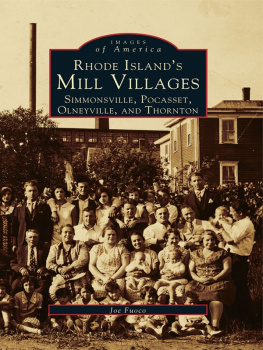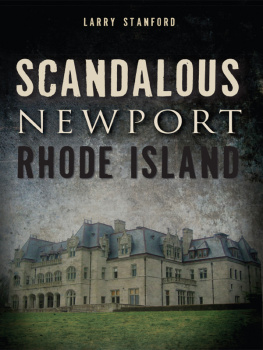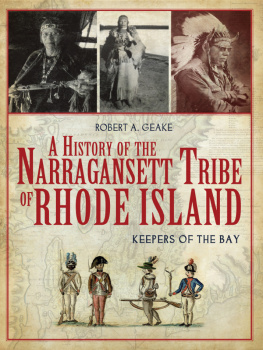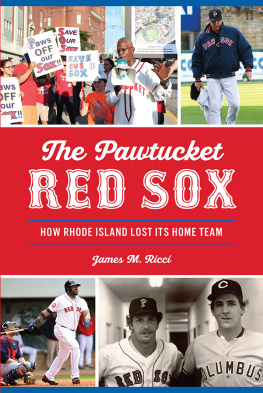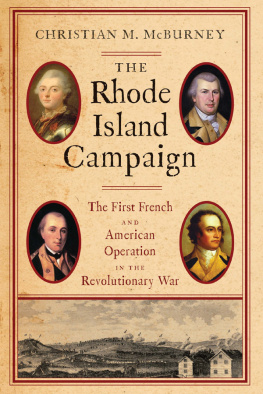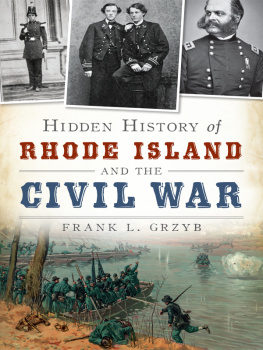R is for Rhode Island Red
A Rhode Island Alphabet

Written by Mark R. Allio and Illustrated by Mary Jane Begin
This is an electronic sample of the print textbook.
The publisher reserves the right to remove content from this title at any time if subsequent rights restrictions require it.
For valuable information on pricing, previous editions, changes to current editions
and alternate formats, please visit www.cengage.com/highered to search by ISBN#, author, title, or keyword for materials in your areas of interest.
Wed like to thank all of the willing participants who kindly posed for pictures and those who encouraged us every step of the way. Thank you Mom, Dad, Gates, Liam, Robert and Barbara Allio, Camillo Eifler, John Mott, Bob Paolo, Katie Dubois, Danny and the Begin family, the Waterman, Scorza and Stamatakos families, and all of the friends and neighbors who contributed great ideas!
Wed also like to thank all of the companies and institutions that gave permission or who provided vital information that helped in the creation of this book. Thank you to the Pawtucket Red Sox, the Rhode Island Historical Society, Bill Mulholland of Rhode Island Parks and Recreation, Slater Park Carousel, Modern Diner, Dels Frozen Lemonade, Stephan Goldman of New England Pest Control, the Rhode Island Tourism and Visitor Bureau, Ed Lane and Wayne Charness of Hasbro, Slater Mill Museum and the Providence Art Club, the Astors Beechwood Mansion, Save the Bay, Rhode Island Red Society, Roger Williams Society, Costantinos Venda Ravioli, and the City of Providence.
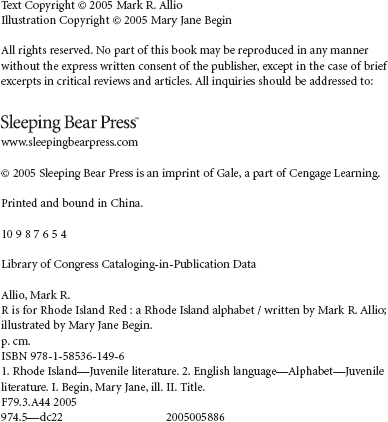
To my mother and father, who made me an Independent Man,
to Gates and Liam, through their young eyes I see again
and to Mary Jane, with whom I have truly found Providence.
MARK

To my Aunt Annette,
known to many as Sister Jacqueline Marie,
for her wit, wisdom, tenacious spirit,
and life long dedication to teaching.
MARY JANE
A
Spelling books always pair a letter with a word, and A is usually for Apple. So we thought wed begin your journey through Rhode Island with the state fruit, the Rhode Island Greening Apple! When William Blaxton moved to Rhode Island and planted his orchard in 1635, in keeping with farming tradition, he got to name the first apple grown in an orchard in America! He named his apple Blaxtons Yellow Sweeting but somehow the name was changed to Sweet Rhode Island Greening.
This mediumsize apple has a green skin that becomes more yellow when ripening on the tree. Its juicy, tart fruit is delicious eaten raw, and its taste and texture make it perfect for apple pies. The Rhode Island Greening is now grown throughout the eastern and central United States from October to April. Do you like applesauce? Chances are that it was made from the Rhode Island Greening!
A is for Apple.
Whether you try it in a pie or take it off the tree, our state chose the Greening.
One bite and youll agree!

B
Native Americans lived in Rhode Island long before the arrival of Europeans. Historians believe its coastline was visited by the Irish, the Vikings, and the Portuguese, but it was the Italian explorer Giovanni da Verrazano who made the first official voyage in 1524. As Verrazano sailed through these waters, he saw an island 12 miles offshore and wrote in his log that it looked like the Greek island of Rhodes, which many believe was the beginning of the states name.
Almost a century later, in 1614, Dutch mariner Adriaen Block also sailed through these waters and came ashore to the island, which he named Block Island (after himself!) The island is only six miles long by three miles wide, but its towering seaside bluffs, rolling hills, and 365 freshwater ponds (one for each day of the year), make it a local treasure, named by the Nature Conservancy as one of the 12 last great places in the Western Hemisphere.
B is for Block Island.
Block Island, Rhode Island, a beautiful place to be, there in the distance towards the heart of the sea.
From its majestic bluffs to its peaceful shore, one visit there and youll wish for more!

C
Have you ever ridden a merrygoround? Rhode Island has three of the nations finest 150 remaining original handcarved wooden carousels. The Flying Horse Carousel, located in Westerly, is the oldest operating carousel in America, built in the 1850s. Its horses hang by chains and so the faster it spins, the farther out the horses fly!
The Crescent Park Carousel, located in East Providence, was built in 1895 by Charles I.D. Looff, a Danish immigrant famous for his craftsmanship. Its 66 handcarved figures include dragons, serpents, and 56 jumping horses, with no two alike.
The Slater Memorial Park Carousel, located in Pawtucket, is another antique Looff carousel built in the 1880s, said to be the fastest Looff carousel ever made. Hold on to your hat as you try to grab the brass ring!
C is for Carousel.
I hear the music and sounds of children laughing in delight.
I smell the popcorn and cotton candy and see a thrilling sight!

D
Yes, its true, diners started right here in Rhode Island. It was 1858 when 17yearold Walter Scott decided to make more money by selling coffee and sandwiches from a basket to newspaper night workers in Providence. By 1872 business was booming, and Scott began to sell his food from a horsedrawn covered wagon parked outside the Providence Journal newspaper office. As word of his success spread, others began to offer food from larger and more elaborate wagons, which began to look like the dining cars on rail road trains. The word diner is said to be short for railroad dining car because some owners actually made their restaurants from old railroad passenger cars and trolleys. Some of the more famous include the Modern Diner in Pawtucket, the first diner to be listed on the National Register of Historic Places, and the Haven Brothers diner in Providence, which parks itself every summer and fall, as it has for the past 100 years, in front of City Hall.
D is for Diner.
They began here in our state.
Most have neon light, serving up home cooking morning, noon, and night.

E
The East Side is a famous Providence neighborhood known throughout the state for its history, buildings, and people. It was right here on the east side of the Moshassuck River where Roger Williams established the settlement that became the state capital. The East Side includes the largest single collection of National Historic Society buildings in America, with many located on or near Benefit Street, which has been called the Mile of History. In the mid1900s, when many of these old buildings were in danger of being torn down, one woman, Antoinette Downing, led an effort to save them, beginning a preservation movement across America. She became best known for her defense of the College Hill neighborhood in Providence, home to Benefit Street. Many of the restored grand mansions in Newport were also saved by Downing and her supporters, many of whom were women.


